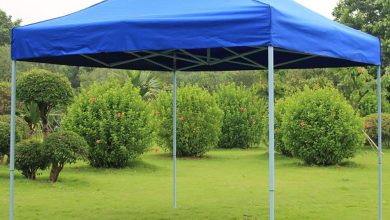
Periods may be a thing of every month, but that does not make them any less daunting. Many women have to bow down to their hormones; suffering first from premenstrual syndrome, followed by the fatigue of Period Periods and the cramps they bring, ending finally with euphoria from getting through the month. And then, repeat.
Getting through the periods
Notwithstanding the pain from periods, there is also the issue of protective period paraphernalia. There many facets that need to consider to choose the correct period product.
Some months, the flow is too much. Women then need to change their pads or tampon every few hours. This can be impossible in certain situations, making it rather inconvenient. Similarly, for women with little flow, wearing thick pads can be just as bothersome.
While you should visit your Gynecologist in Islamabad when accosted with abnormal flow, however, generally different women have different flows that are consistent across every month.
Therefore, what protective period paraphernalia you use is entirely your own choice. Some options available include:
Sanitary Pads
The most common perhaps are the sanitary pads. They are not at all technical to use, unlike the cups and tampons. Made from absorbent material, they worn externally.
There is also a wide variety of pads available now, which gives women more options to choose from, as per their flow. From the very minimal panty liners to the long and thick maternity pads, consumer has ample options to choose from.
However, the variation is not just in terms of size, but also as per the material. Generally, the mass-produced sanitary napkins made from cotton, plastic and bleached rayon. Some indigenous and reusable pads made simply from cloth, alongside other materials like bamboo, cotton flannel or even hemp.
It is recommended that pads change after every 3-4 hours, to prevent bacteria from festering. Women should also opt for the odorless pads, as scents are not good for the delicate vaginal skin.

Menstrual Cups
Many people wrongly assumed that menstrual cups are a recent invention, however, they have around since the 19th century.
A menstrual cup is made from flexible material. It is inserted inside the vagina, to collect the blood; it does not absorb the blood, unlike tampons and pads. The cup can sustain for some women for their entire cycle, but women with heavier flow might need to empty and reuse it twice a day, or so.
Menstrual cups may seem like a different and disconcerting idea, but they come with several advantages. As they are reusable, they do not produce as much waste as some of the alternative. The cup sustains you for longer; not just in terms of visits to the loo during the cycle, but also visits to the market are also reduced as you do not need to buy large quantities.
There are also some drawbacks to them; menstrual cup insertion and removal can be hard. It may also be hard to clean in public bathrooms, people might not find the cup with right fit. It can also dislodge the IUD device for women who are using this contraceptive.
Absorbent Underwear
Also known as period panties, this underwear carries absorbent material within them. Therefore, one does not have to wear any other period protection product; they are it. Some women, however, use it them to prevent any embarrassing leakage that stains their bottoms, but also use other protective products alongside.
Period panties are reusable, and thus popular with those minimizing their carbon footprint. Moreover, they can easily pop in the washing machine. Most brands carry the underwear in different strengths, to protect against light to heavy flow.
Some period panties also locked with odor controlling properties. In some cases, a panty can last woman whole day, after which she might have to change, however, the number of changes is ultimately contingent on the flow.
Since they are comfortable, leak proof and available in different styles –from briefs to swimming panties — you can resume with your normal routine and not make exceptions for period days. There is also no danger, unlike pads and tampons, of the panties getting dislodged.
However, you cannot change the panties in public loos. There is also the ick factor in some women as they are uncomfortable bleeding into their panties.
Tampons
Tampons, like menstrual cups, worn inside of the vagina. They made from cotton, rayon, or both. Most of the tampons made for single use, because even if you get the reusable ones, they carry the risk of being infections like yeast, bacterial and fungus. They are thus neither safe, nor suggested.
Another factor to consider when using tampons is their absorbance. It is suggested that you change after every 4-8 hours and get one which minimum absorbance. If tampon has high absorbance, it increases the risk of toxic shock syndrome.
In TSS, certain bacteria produce toxins in the body, that can cause organ damage, shock, and in the worst case, death as well. Tampons can harbor bacteria that may lead to TSS, and that is why, one should change the tampon frequently.
Women can also have allergy to tampons. Moreover, if you have pain, fever, vaginal discharge other than periods as you don on tampons, you should consult the Best Gynecologist in Lahore, as this state is not usual, and rather worrisome.





